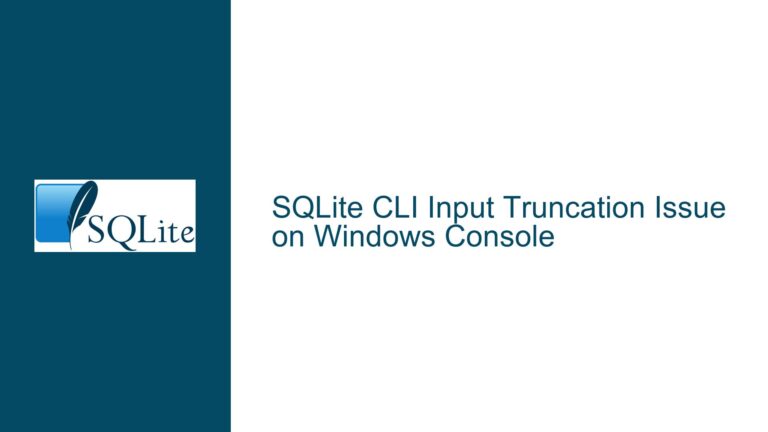SQLite Read-Only Access: Chrome History Database Lock Resolution
Understanding SQLite Database Exclusive Locking in Browser Environments
SQLite databases serve as the backbone for many browser-based storage solutions, with Chrome’s History being a prime example of this implementation. The database engine employs a robust locking mechanism that can create access conflicts when multiple processes attempt to interact with the same database file. In Chrome’s specific case, the browser maintains an exclusive lock on its History database during runtime, implementing a heightened security measure to prevent concurrent access and potential data corruption.
The exclusive locking mechanism operates at the file system level, creating a scenario where even read-only access attempts are blocked. This design choice prioritizes data integrity over accessibility, ensuring that no other process can access the database while Chrome maintains its connection. The exclusive lock remains active throughout the browser’s entire runtime, regardless of whether active writes are occurring.
When attempting to access the History database through SQLite’s command-line interface (CLI) or programmatic methods, users encounter the "database is locked" error message, even when explicitly requesting read-only access. This behavior stems from SQLite’s fundamental design principle of preventing any form of concurrent access when exclusive locks are in place.
Database Locking Mechanisms and Access Control Patterns
The complexity of SQLite’s locking system extends beyond simple read/write permissions. The database engine implements multiple locking states:
Shared Lock State
A shared lock allows multiple processes to read from the database simultaneously. However, Chrome’s History database bypasses this sharing capability by implementing an exclusive lock from the moment the browser launches.
Reserved Lock State
Reserved locks indicate a process’s intention to write to the database. Chrome utilizes this state during its initialization phase before elevating to an exclusive lock.
Exclusive Lock State
The most restrictive lock level prevents all other processes from accessing the database, regardless of their intended operation mode. Chrome maintains this lock state throughout its runtime to ensure data consistency.
Lock Escalation Process
The progression from shared to exclusive locks follows a strict protocol designed to prevent race conditions and ensure data integrity. Chrome’s implementation directly acquires an exclusive lock, bypassing intermediate states.
File System Integration
The locking mechanism integrates deeply with the operating system’s file handling capabilities, creating platform-specific considerations for access control implementation.
Advanced Access Solutions and Implementation Strategies
Several approaches exist for accessing locked SQLite databases, each with distinct trade-offs and implementation considerations:
Database File Replication
Creating a temporary copy of the database file provides a workable solution, though it requires careful handling of file system operations and consideration of potential data staleness.
import shutil
import sqlite3
import tempfile
def safe_read_locked_db(db_path):
temp_dir = tempfile.mkdtemp()
temp_db = os.path.join(temp_dir, 'temp_history.db')
try:
shutil.copy2(db_path, temp_db)
conn = sqlite3.connect(temp_db)
return conn
except sqlite3.Error as e:
raise Exception(f"Database access error: {e}")
finally:
if os.path.exists(temp_dir):
shutil.rmtree(temp_dir)
Shared Memory Access Patterns
Implementing shared memory access patterns requires careful consideration of process synchronization and memory management:
#include <sqlite3.h>
int configure_shared_access(sqlite3 *db) {
char *pragma_query = "PRAGMA journal_mode=MEMORY; PRAGMA synchronous=OFF;";
char *err_msg = 0;
int rc = sqlite3_exec(db, pragma_query, 0, 0, &err_msg);
if (rc != SQLITE_OK) {
sqlite3_free(err_msg);
return rc;
}
return SQLITE_OK;
}
Transaction Management
Proper transaction handling becomes crucial when dealing with locked databases:
PRAGMA journal_mode = WAL;
PRAGMA synchronous = NORMAL;
PRAGMA cache_size = -2000;
PRAGMA temp_store = MEMORY;
Connection Pooling Implementation
Managing database connections efficiently requires a robust pooling mechanism:
class DatabaseConnectionPool:
def __init__(self, max_connections=5):
self.pool = queue.Queue(maxsize=max_connections)
self.size = max_connections
def get_connection(self):
try:
return self.pool.get(block=True, timeout=30)
except queue.Empty:
conn = sqlite3.connect('history.db',
isolation_level=None,
uri=True)
return conn
def return_connection(self, conn):
if self.pool.qsize() < self.size:
self.pool.put(conn)
else:
conn.close()
Recovery and Integrity Verification
Implementing robust recovery mechanisms ensures data consistency:
def verify_database_integrity(db_path):
conn = sqlite3.connect(db_path)
cursor = conn.cursor()
try:
cursor.execute("PRAGMA integrity_check;")
result = cursor.fetchone()
return result == "ok"
finally:
conn.close()
The implementation of these solutions requires careful consideration of the specific use case and environmental constraints. When dealing with Chrome’s History database, the most reliable approach involves creating a temporary copy of the database file and implementing proper error handling and cleanup procedures.
For applications requiring real-time access to Chrome’s History data, implementing a service that periodically copies and indexes the database content provides a more robust solution than attempting to directly access the locked database. This approach requires careful management of system resources and implementation of proper cleanup procedures to prevent accumulation of temporary files.
Understanding the underlying locking mechanisms and implementing appropriate access patterns ensures reliable database operations while maintaining data integrity. The solution architecture should consider factors such as performance requirements, consistency needs, and system resource constraints when choosing between different implementation approaches.





